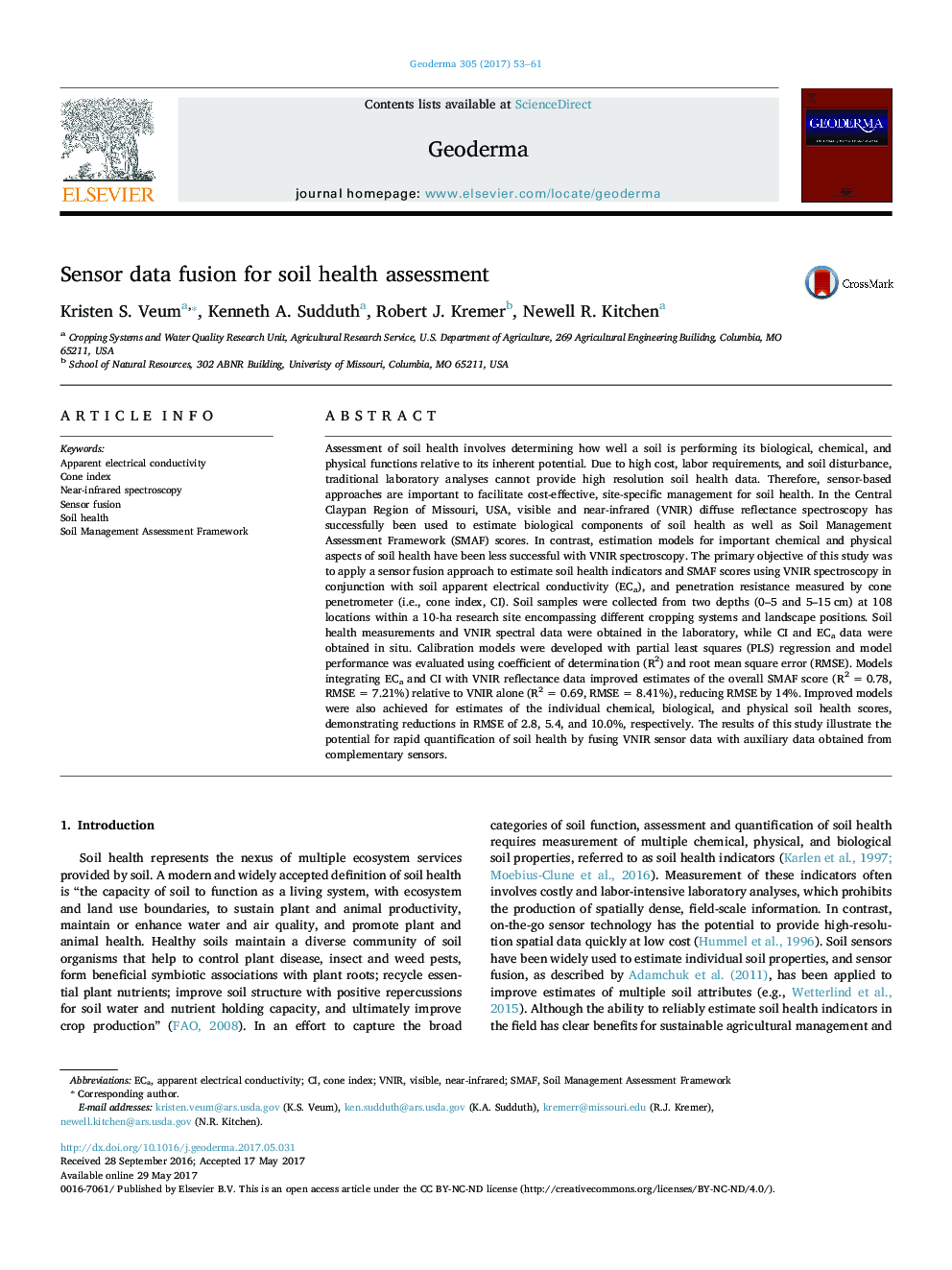| کد مقاله | کد نشریه | سال انتشار | مقاله انگلیسی | نسخه تمام متن |
|---|---|---|---|---|
| 5770275 | 1629412 | 2017 | 9 صفحه PDF | دانلود رایگان |
- Soil health assessment reflects biological, physical, and chemical soil functions.
- Sensor data fusion technology facilitates high-resolution soil health assessment.
- VNIR spectra provided robust estimates of biological properties.
- Chemical and physical soil properties were not estimated well by VNIR spectra.
- Combining ECa and CI data with VNIR spectra improved soil health assessment.
Assessment of soil health involves determining how well a soil is performing its biological, chemical, and physical functions relative to its inherent potential. Due to high cost, labor requirements, and soil disturbance, traditional laboratory analyses cannot provide high resolution soil health data. Therefore, sensor-based approaches are important to facilitate cost-effective, site-specific management for soil health. In the Central Claypan Region of Missouri, USA, visible and near-infrared (VNIR) diffuse reflectance spectroscopy has successfully been used to estimate biological components of soil health as well as Soil Management Assessment Framework (SMAF) scores. In contrast, estimation models for important chemical and physical aspects of soil health have been less successful with VNIR spectroscopy. The primary objective of this study was to apply a sensor fusion approach to estimate soil health indicators and SMAF scores using VNIR spectroscopy in conjunction with soil apparent electrical conductivity (ECa), and penetration resistance measured by cone penetrometer (i.e., cone index, CI). Soil samples were collected from two depths (0-5 and 5-15Â cm) at 108 locations within a 10-ha research site encompassing different cropping systems and landscape positions. Soil health measurements and VNIR spectral data were obtained in the laboratory, while CI and ECa data were obtained in situ. Calibration models were developed with partial least squares (PLS) regression and model performance was evaluated using coefficient of determination (R2) and root mean square error (RMSE). Models integrating ECa and CI with VNIR reflectance data improved estimates of the overall SMAF score (R2Â =Â 0.78, RMSEÂ =Â 7.21%) relative to VNIR alone (R2Â =Â 0.69, RMSEÂ =Â 8.41%), reducing RMSE by 14%. Improved models were also achieved for estimates of the individual chemical, biological, and physical soil health scores, demonstrating reductions in RMSE of 2.8, 5.4, and 10.0%, respectively. The results of this study illustrate the potential for rapid quantification of soil health by fusing VNIR sensor data with auxiliary data obtained from complementary sensors.
Journal: Geoderma - Volume 305, 1 November 2017, Pages 53-61
